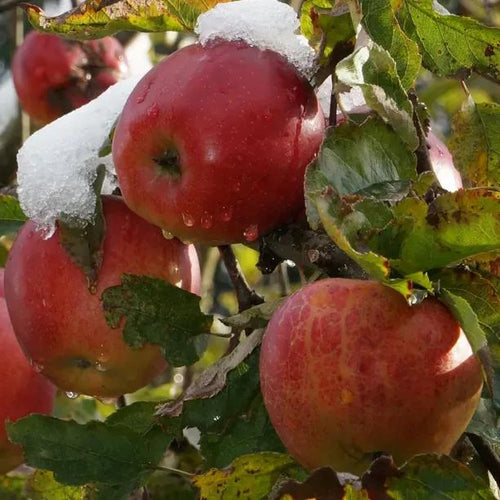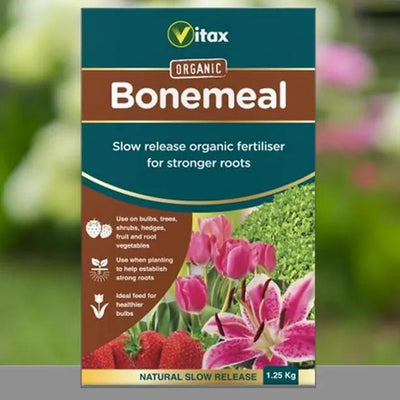Frederick Apple Trees
The Frederick apple tree produces a mid-season cooking & cider apple.
The vintage quality fruit are best used as "full sharp" cider apple and will make a great quality brew all by themselves. They juice beautifully, and also make a delicious, non-astringent soft drink.
They don't store for long, but fortunately they cook well and make superb apple jelly.
Like several great older varieties, this variety tends to be a bit slow to start cropping, and it has a biennial tendency that needs to be managed. Since you could get a poor crop every other year, we recommend having another cider apple tree to guarantee a good yield.
Browse our range of apple trees or the full variety of fruit trees.
Features
- Use: Cooking. Cider.
- Vintage quality: full sharp.
- Spur Bearer: suitable for cordons & espaliers, trained on wires.
- Growth habit: Average vigour.
-
Harvest: Mid October
-
Store & ripen in a cool, dry place: Cider apples should be pressed for their juice as quickly as possible. Apples used for cooking will store for 1 month.
Rootstocks:
All of our Frederick trees are grown on MM106 rootstocks.
Pollination Partners for Frederick:
Your trees are self sterile and their flowers must be pollinated to make fruit.
Frederick is in pollination Group D.
This means that they'll cross-pollinate with other apple trees in pollination Groups C, D and E.
See our Guide to Apple Tree Pollination for a full list of partners & more tips about pollination.
Have a look at our quick guide if you are new to brewing cider at home.
History & Trivia
This tree was found growing in the Forest of Dean, Monmouthshire, during the 1800's.
How Apple Trees are Measured & Delivered:
Our fruit trees are delivered in up to 3 shapes and you can also buy selected apple trees as ready made cordons.
Maiden: This unbranched tree is the smallest starting size. You can train maidens into espaliers and cordons.
Cordon: Frederick trees are spur-bearers, so they can be made into cordons and espaliers.
Bush: This is a style of freestanding tree with a short trunk of about 60cm. It'll grow to about 3 metres tall.
Half-Standard: This is a freestanding style that will grow into a full sized, "normal" apple tree, about 4 metres tall.








 Secure, One-Tap Checkout
Secure, One-Tap Checkout
 Hand Picked, Delivered to Your Door!
Hand Picked, Delivered to Your Door! 1 Year Bareroot Guarantee
1 Year Bareroot Guarantee










